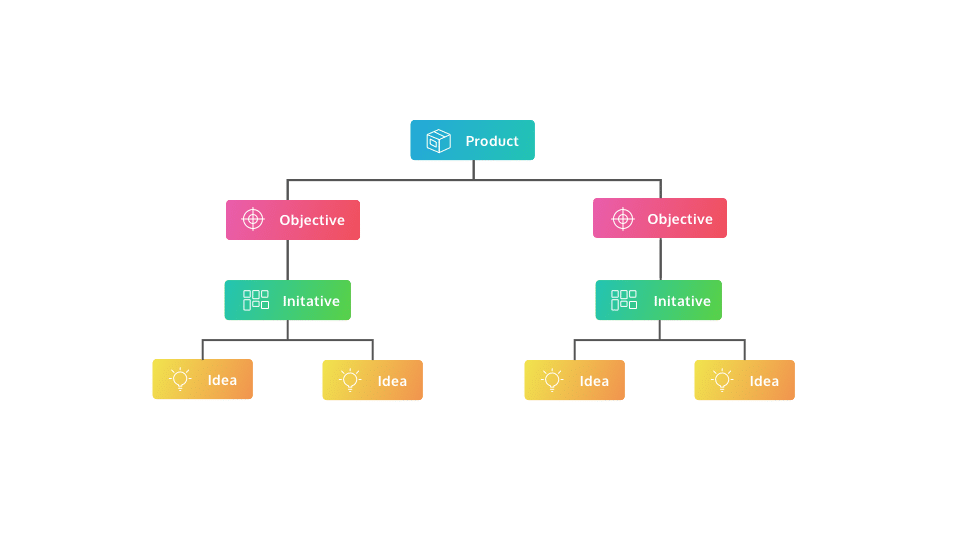Lead by Example – Why Objectives Alone are not Enough
This blog post is part of a series. Get started here.
It’s fashionable currently among the anti-roadmap faction to believe that you can better build a product by just using objectives.
But while using only objectives is better than the featureitis of a Gantt based roadmap, it still suffers from several problems that result in a poorly delivered product. You’ll end up with a product that people don’t love.
A list of objectives means that you build in a linear manner. While concentrating on one objective at a time might be good for focus, it can be bad for the product’s development overall, since it takes no account of the relationship between objectives. If two objectives are in tension you can spend a lot of time undoing work you’ve already done.
Product management done by list of objectives only means you lose the ability to see and prioritise solutions that tackle more than one objective at a time. It means you optimise for single points and not the overall strategy. It’s like improving or optimising at a single point in a manufacturing process without paying attention to the impact on the overall process, and ending up with a worse performance than considering the overall system would have had.
The art of product management is in optimising for delivery of the product vision rather than any specific objective. Relying on a list of objectives is a poor way of achieving this, particularly as the objectives may be company ones rather than product ones.
So should you ditch objectives? Not at all. Objectives are vitally important: they are the outcomes that help you implement the product strategy that delivers your product vision.
But product objectives must be considered holistically in terms of your product strategy – and this is where roadmaps come in. Not Gantt-based roadmaps but objective-based roadmaps.
With objective-based roadmaps you can see how the problems you plan to solve help you move towards the outcomes described by your objectives. You can prioritise problems and solutions that solve multiple product objectives. You can see how working on one objective could cause problems for other objectives.
Objective-based roadmaps showcase areas of focus (initiatives or problems to be solved) via three time horizons (now, next and later) and then link those areas of focus to the objectives. You quickly see commonalities and conflicts, so that you can prioritise while showing progress and order of delivery without being terrorised by arbitrary deadlines.
Objective-based roadmaps allow you to re-prioritise easily as the company objectives and product strategy evolve.
So, what does a good objective-based roadmap look like? The hierarchy shown below meets the needs of all stakeholders. The product roadmap is made of up of a series of initiatives and in each case, the initiative is designed to achieve the outcomes defined by the associated objective(s). This is still pretty high level, so the addition of ideas – experiments which can be run or prototypes which can be tested – means that there is an indication of what can actually be done to solve the user’s problem. This ensures that the roadmap can be communicated in a way that’s appropriate for the audience – i.e. leadership, sales and marketing can see what problems will be solved while the delivery teams can see what they need to try in order to solve the problem.

In essence, an objective-based roadmap becomes a prototype for your product strategy, one that can be understood and responded to by everyone in the organization.
Cards in the “later” and “candidate” columns should either have no objective or only the strategic objectives. As the cards then move into the next and now columns they should also gain tactical objectives.
It is not enough to just have objectives and manage your product on a list of objectives. You need to place the objectives and initiatives for each objective in context so you can choose the most effective course to reach your product vision. A roadmap creates this necessary context.
Discovery, vision, objectives and roadmaps, how does this all fit together? Find out in the next in this series of blog posts.
Sign up to our monthly newsletter, The Outcome.
You’ll get all our exclusive tips, tricks and handy resources sent straight to your inbox.